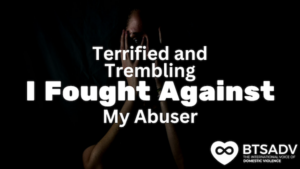By Sammie Rose
Domestic violence is a pervasive issue, affecting millions of lives each day. While most think of physical abuse, the layers of domestic violence stretch far beyond that, encompassing emotional, psychological, and financial forms. Each instance causes deep harm, with some victims losing their lives to their abusers. The question remains: How many more lives need to be lost before society takes real, transformative action to tackle domestic violence effectively?
Understanding the Root Causes of Abuse
To address domestic violence at its core, we must first understand the reasons why abusers act as they do. Often, abusive behaviors stem from learned patterns in violent households, cultural backgrounds that tolerate or support such behavior, or even psychological disorders. These underlying causes help perpetuate the cycle of abuse, and until we address them, true progress will be limited.
While there are resources available—domestic violence shelters, hotlines, advocacy groups, and legal protections—the support victims receive often isn’t enough to break the cycle. For real change, prevention must start with a deep understanding of why abuse occurs in the first place. Only then can we begin to prevent violence before it starts, by educating communities and addressing societal norms that allow domestic violence to persist.
Prevention Through Education and Community Support
One of the most effective ways to prevent domestic violence is through early education and community programs. Domestic violence prevention should be taught from an early age, much like mental health education is being implemented in schools. Teaching children to recognize the signs of abuse and understand that violence is never acceptable could shift the narrative for future generations.
In addition to education, domestic violence prevention programs could provide communities with the tools they need to rise together and tackle the issue as a whole. By working together, we can disrupt the cycle of violence before it escalates, creating safer environments for families and individuals.
Challenges and the Way Forward
Despite the progress that has been made in supporting victims of domestic violence, there is always room for improvement. Addressing domestic violence is complex—each situation is unique, and solutions must be tailored to the individual needs of victims and their families. However, empowering survivors and ensuring their safety must be at the forefront of any approach.
Ending domestic violence requires a collective effort. We need voices that are loud, demanding, and influential enough to shift the narrative and create lasting change. Each of us can play a part in this movement. The fight against domestic violence starts with education, prevention, and unwavering support for those affected. It starts with you.
Hashtags: #DomesticViolence #DVawareness #EndAbuse #StopTheCycle #PreventionMatters #BreakTheSilence #SupportSurvivors #SpeakUp #CommunityChange #SafetyForAll #btsadv










